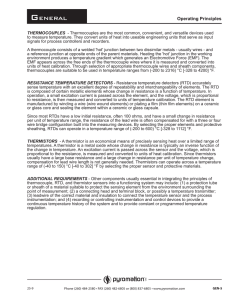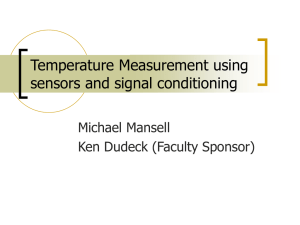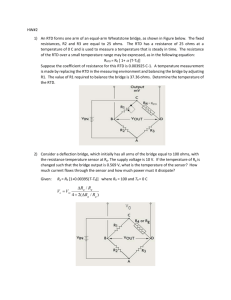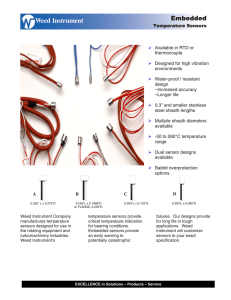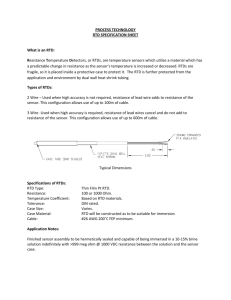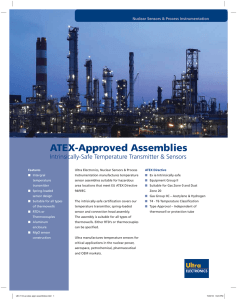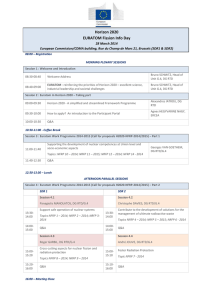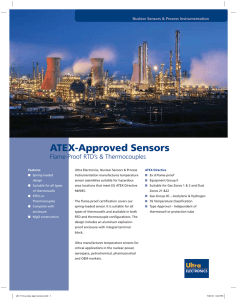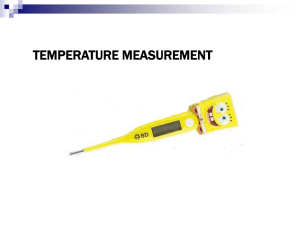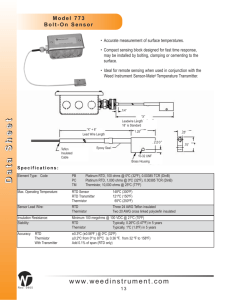Typical Test Problems
advertisement
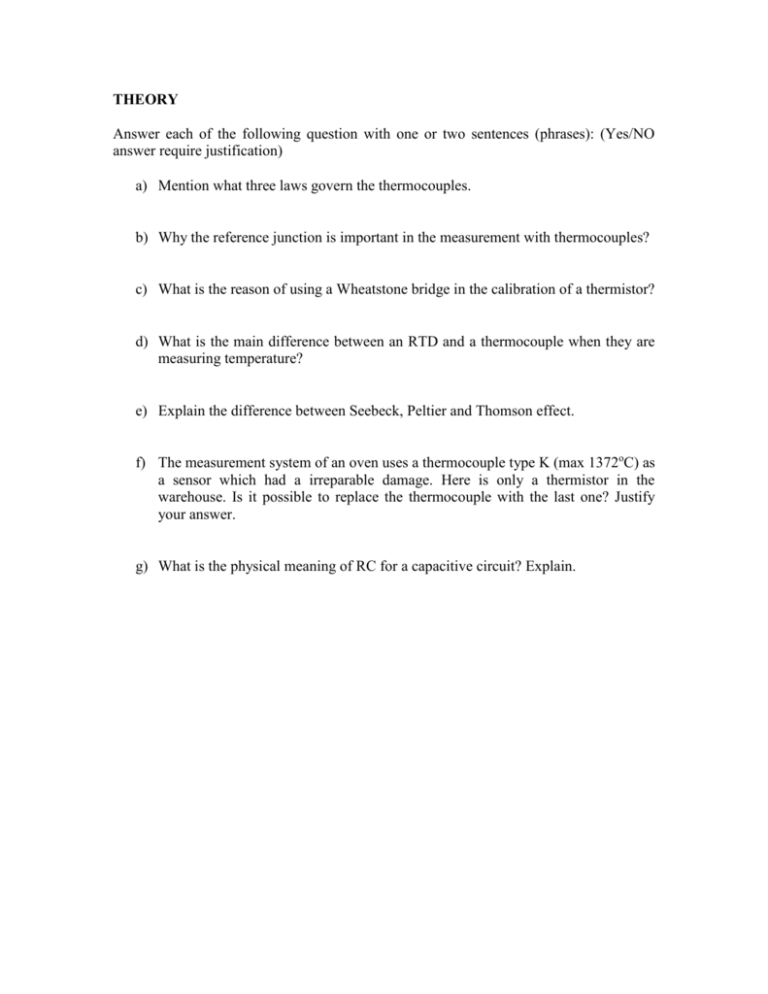
THEORY Answer each of the following question with one or two sentences (phrases): (Yes/NO answer require justification) a) Mention what three laws govern the thermocouples. b) Why the reference junction is important in the measurement with thermocouples? c) What is the reason of using a Wheatstone bridge in the calibration of a thermistor? d) What is the main difference between an RTD and a thermocouple when they are measuring temperature? e) Explain the difference between Seebeck, Peltier and Thomson effect. f) The measurement system of an oven uses a thermocouple type K (max 1372oC) as a sensor which had a irreparable damage. Here is only a thermistor in the warehouse. Is it possible to replace the thermocouple with the last one? Justify your answer. g) What is the physical meaning of RC for a capacitive circuit? Explain. Problem 1 Determine the value of resistance for the different coded colors: Problem 2 For the Wheatstone bridge circuit shown in the Figure 1 calculate the following: a) The Rx value. b) Determine the current I2. Resistor R1 R2 R3 Ei Value 1500 3500 1500 70V R3 R2 R1 Eo Rm Rx I2 Voltmeter E1 Figure 1. Problem 3 The Type J thermocouple circuit shown in Figure 2 is used to measure the temperature T1. The thermocouple junction labeled 2 is at a temperature of 25 oC, maintained by an ice-point bath. The voltage output is measured with a potentiometer and found to be 8.132mV. What is T1? Iron T1 Potentiometer emf=8.132mV Constantan Ice bath Iron 2 Reference Joint 25oC Figure 2. Problem 4 An RTD forms one arm of an equal-arm Wheatstone bridge, as shown in Figure 3. The fixed resistances, R2 and R3 are equal to 25. The RTD has resistance of 25 at a temperature of 0oC and is used to measure a temperature that is steady in time. The resistance of the RTD over a small temperature range may be expressed as: RRTD R0 1 T T0 Suppose the coefficient of resistance for this RTD is 0.003925oC-1. A temperature measurement is made by placing the RTD in the measuring environment and balancing the bridge by adjusting R1. The values of R1 required to balance the bridge is 37.36 . a) Determine the temperature of the RTD b) If the required uncertainly in the measured temperature is 0.5oC, would a 1% total uncertainly in each resistor that make up the bridge be acceptable? Neglect the effects of lead wire resistances. R3 R2 G R1 RTD E1 Figure 3. Problem 5 The material constant is to be determined for a particular thermistor by using the circuit shown in Figure 4. The thermistor has a resistance of 60k at 25oC. The reference resistor in the circuit, R1, has a resistance of 130.5 k. The dissipation constant, , is 0.09mW/ oC. The voltage source used for the measurement is constant at 1.546V. The thermistor is to be used at temperatures ranging from 100oC to 150oC. Determine the value of . Temperature [oC] 100 125 150 E1 Voltage [V] 1.498 1.521 1.543 Ei R1 RT T Figure 4 E1 Problem 6 An RC circuit is used to build a temperature measurement system by means of the time it takes a 100μF capacitor to charge up to 2.5 V. Assume the output of the system is measured at 35°C and eo=5 V, R1=800 Ω, C=100μF. t=0 R1 RRTD eo C A RTD is used to sense the experimental procedures. The measured resistance of the RTD for 0°C and 100°C were 4000 Ω and 16000 Ω, respectively. 1. Determine the RTD’s calibration equation. 2. What is the value of the RTD resistance? 3. Determine the time constant τ. 4. How much time did it take the resistor to charge to 2.5 V.
